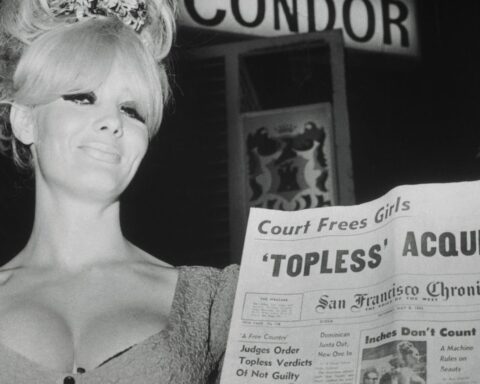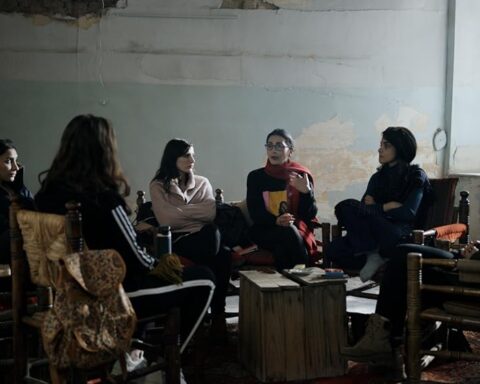A few years ago, two independent studies were done in Sweden concerning parents and how freely they let their children move around. Data was collected at the one year check-up at the paediatrician’s office and both studies determined that boys were allowed to move around with much greater liberty than girls. The daughters were free to move three metres away from their parents before the parents wanted to get them closer, while the sons were permitted to move away all of seven metres before they were called back. That means that girls’ and boys’ allowed range of movement differ dramatically at one year of age; the parents established different boundaries for their children, they protect them differently and they give them different opportunities for exploring.
The parents were less inclined to leave room for risks and had a greater need for control when it came to the girls. I thought that was interesting. My thesis is that this attitude, subconsciously restrictive towards the girls, and subconsciously generous towards the boys, will follow them into adulthood. Not as a single event, but as an integral part of a lifelong pattern.
These thoughts occupied me during the central pitch session at the IDFA (International Documentary Film Festival Amsterdam), where the women were conspicuous by their absence. Out of 27 chosen projects there were only 6.5 female directors. Put together with the smaller pitches, there were 13 female directors out of a total of 43 projects. The results were similar at the pitch in Nyon (Visions du Réel) with six female directors out of 23 projects. This is not unique. Indeed, there generally seems to be a 20:80 ratio of women to men in the film industry. The stories were also focused on men. Middle aged men functioning both as scientific experts and as normative protagonists in documentary realities. The question is why the selection committee chose so few female filmmakers. What are the values underlying their selections? Is there an awareness, a strategy?
Film is a powerful medium. In films, we learn how we were born, how we love, hate, make war and how we die. These are images that etch themselves into our mind, and which will shape our views on the world and ourselves. But who does the talking? Films with female protagonists are in the minority. The characters are more simplistic, more stereotypical. I seldom feel that they represent a truthful narrative of my sex. Where do we exist? It is a question that pertains to feature filmmaking even more than documentary filmmaking. I find it astonishing how little this is discussed within the industry. Is it due to the prevailing power relationships or old habits? Must it continue to be the white middle-aged man who dictates the stories that are being told, the actors and the money? How do I myself contribute to this? How do my own values contribute or even more importantly, reinforce these underlying circumstances?
Vigdis Lian, former CEO for the Norwegian Film Institute, has some interesting ideas about the use of quotas as a possible solution: “Film is culturally identity- forming by way of deciding who is seen, who tells what stories from which perspectives. But film is not gender neutral just as society is not. Is it not striking that men’s stories concern everyone but women’s stories only concern women. In reviews, industry-talk and everyday conversation, film is, as an expression, gender biased. Therefore it is no surprise that the same holds when it comes to selection committees and financial backers. The fact that I cannot partake in the stories, dreams and thoughts of half the population, creates a democratic deficit. We live in a 20:80 world.”
The issue of the identity deficit is not unknown. Everybody has something to say regarding the issue but there is an essential and distinct dividing line between lip service and action.
To do something concrete, we could begin by examining the rooms where the decisions are being made. Who sits around the table, who is in the room, what stratum of society, gender or ethnicity is present? Who speaks? Who is quiet and who is missing? Whose interpretations are given precedence? Which are the shared cultural, cinematic and political references? Which narratives will not be looked at? The sum of all this is not only relevant from the point of view of the politics in the film industry, but also from an artistic, democratic and market- based point of view. We, as the financial backers, have in our hands the power to decide which realities will be depicted on screen and which realities will be put aside.
And what do you do with this knowledge? One can put the blame on someone else or work for change.
How is it with the financial backers in television? I wonder how often issues of gender, age, ethnicity and power relationships appear on the agenda when these decision makers meet. Always, never, often, rarely, as a joke, as an absence, as a possibility, as a problem? What an incredible responsibility it is to decide which narratives will be financed.
To be able to create a quality programme that is exciting, varied, democratic and enriching requires deliberate strategies, an eagerness for fresh ideas, a willingness to learn from old, and the courage to challenge one’s own values and principles. We need to formulate measurable goals. Goals that can be updated and that encompass everyone’s work for each year. We need to draft timetables and put a monetary value on its worth.
The use of statistical data is a tool, existing independently from what one believes or wants to believe. Instead it only shows hard facts. Once one has started to develop data, there are no limits as to what one can investigate. At this point, one could continue with discussion groups and then invest in informed efforts to break free from the old norms; norms that ultimately become an issue of democracy.
We can also make use of a diversity checklist, one that furnishes a series of questions to the production companies. It could be obtained from us, the financial backers. The Swedish Union for Theatre, Artists and Media (Teaterförbundet) and the Swedish Performing Arts (Svensk Scenkonst) have such a checklist that inspired me a great deal. It was developed to facilitate discussions in the artistic process. We could redevelop it to fit filmmaking. The list poses 20 different questions related to norms and gender. A few examples:
“Has the film team considered issues like ethnicity, gender, power and sexuality?” “How does the team look?” “What are the predominant values?” “Has the production company discussed whether the story contributes to preserve or challenge prevailing norms and notions concerning for example age, ethnicity, disabilities, sexuality?” “Has the production company considered how people are depicted in words and in pictures and how people are exposed in the marketing of the film?”
Documentary film is all about personal storytelling and the visual transformation of how the auteur perceives and unfolds reality. It is a strong and unique form of visual art that builds on the unknown, on contradictions, frictions and the desire to understand the complexity of being a human being. It has the potential to change our minds and eventually change ourselves. To achieve real democracy and full human rights, men and women must have the same means to shape society and our own lives. Filmmaking can be a part of this line of development; can work in this direction, towards this goal. Is that what we want?











